In the latest instalment of the ongoing documentation of the curious recurrence of the number three in the avifauna of Trinidad and Tobago, we arrive on the triad of Grassquits. For the uninitiated, while on a deep dive into Trinbagonian ornithology a few years ago I noticed groups of three popping up in multiple places. With the country itself having a tri- prefix, the island of Trinidad features three mountain ranges – one of which is called the Trinity Hills.
I have written on this feature several times before, and the already impressive list is continually expanding:
Bitterns | Trogons | Antshrikes | Spinetails | Manakins | Hermits | Honeycreepers | Warblers | Myiarchus | Nighthawks
The common grassquit on both islands is the endearing Blue-black Grassquit. Males are famous for their jumping territorial displays; what they lack in gaudy Neotropical colours they make up for in charisma. Females are a warm brown with a streaky chest.
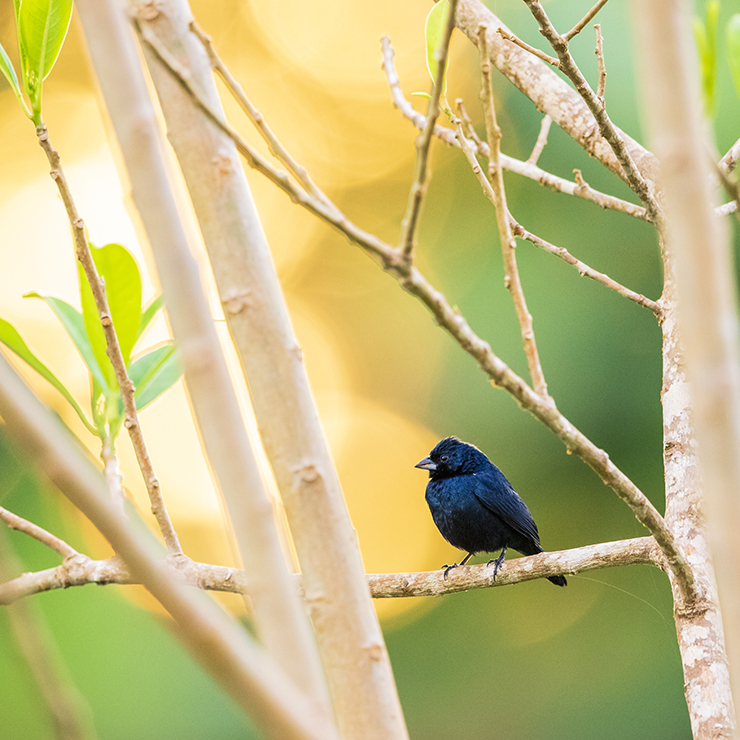
As their name implies, male Blue-black Grassquits are bluish black.
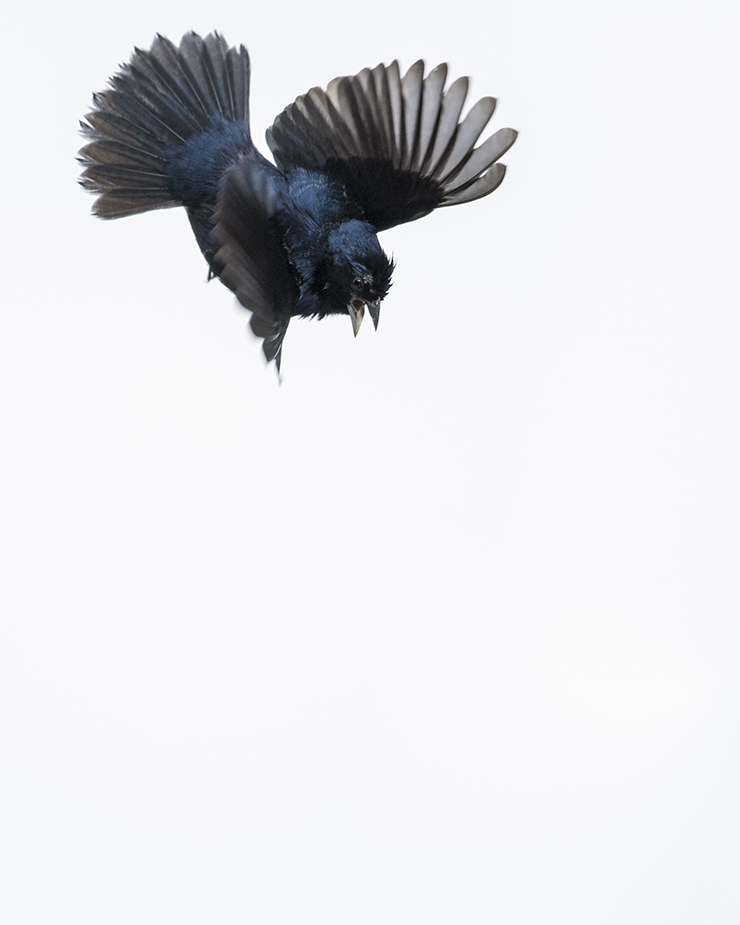
A male Blue-black Grassquit in display mode.
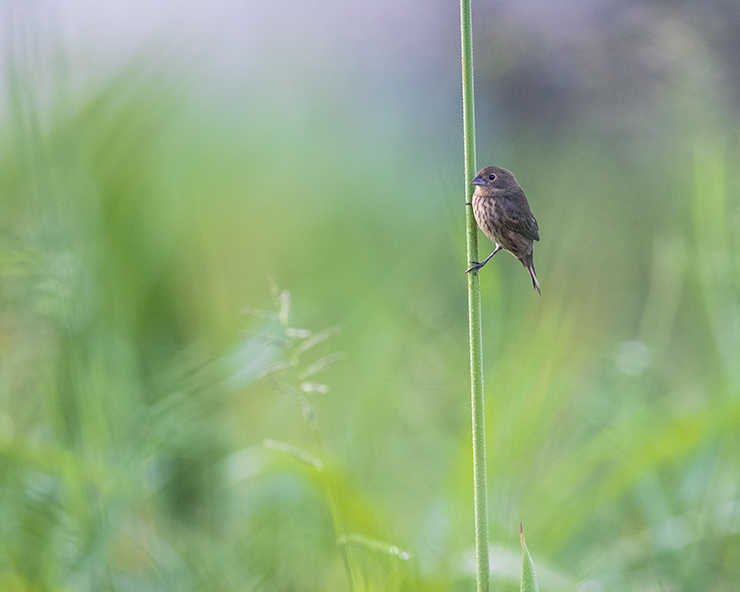
Blue-black Grassquit, a female.
The islands off the coast of northwest Trinidad are geologically more closely related to Tobago than they are to Trinidad. This is reflected in the birdlife of the islands, specially pertaining to this article is the Black-faced Grassquit. These seed-eating birds are found on Tobago as well as on Trinidad’s offshore islands straddling the gap between Trinidad and Venezuela – but are not found on mainland Trinidad.
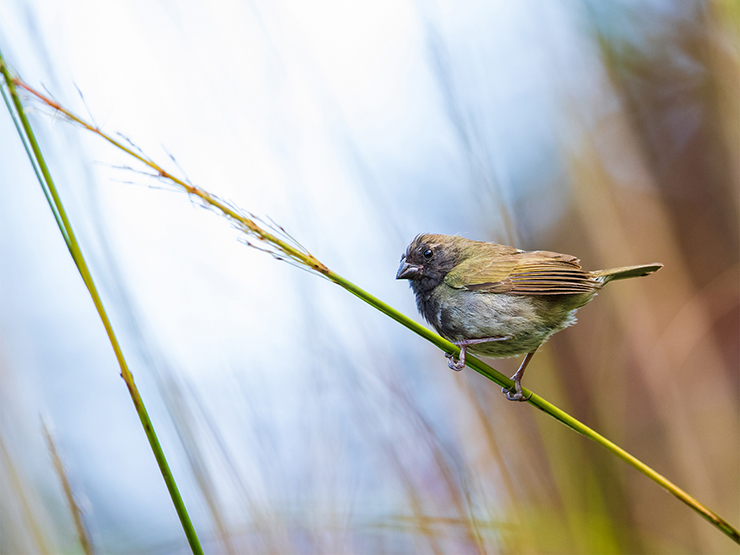
Only the male Black-faced Grassquit carries a black face.
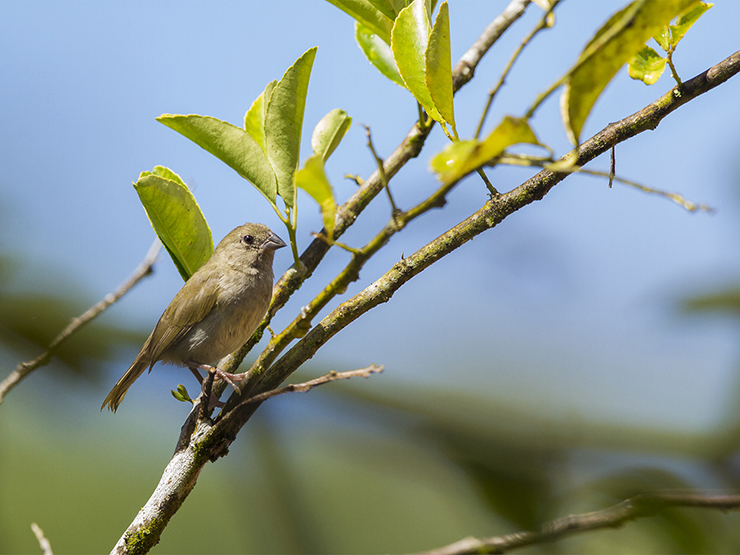
Female Black-faced Grassquits are light uniform olive-green.
The only grassquit that is found on a single island is the Sooty Grassquit. As its name implies, males look like they have just flown out of a pile of ashes. Females are a little less nondescript, with brownish wings giving way to a light olive breast and belly. This species is not common in low-lying grassy fields typical of grassquits, but tends to gravitate toward more wooded areas, feeding on grass seeds in clearings and forest edge habitat. The Sooty Grassquit has an interesting distribution, being most commonly found along the southeastern coast of Brazil.
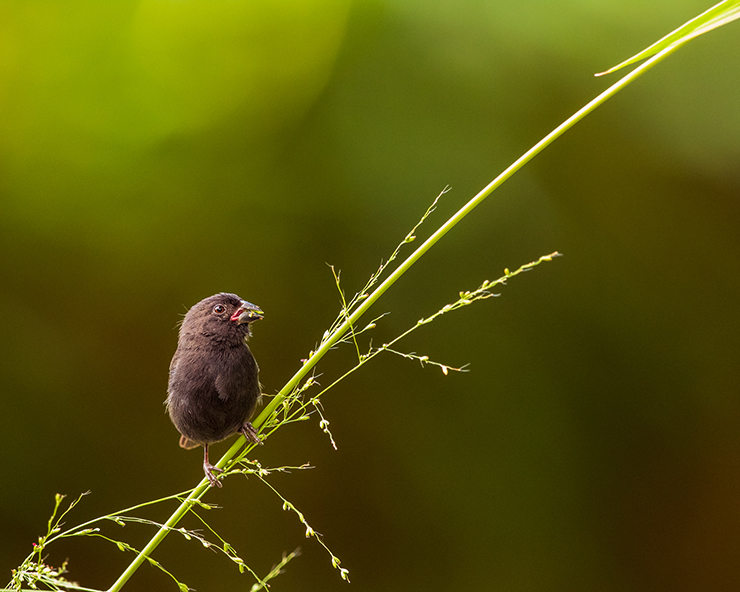
Sooty Grassquit, employing an effective strategy to strip grass seeds.
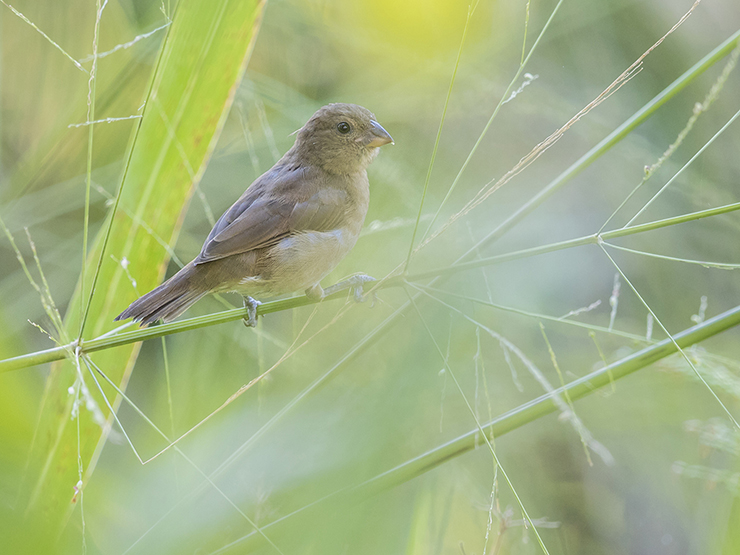
Sooty Grassquit, female.
Source link


